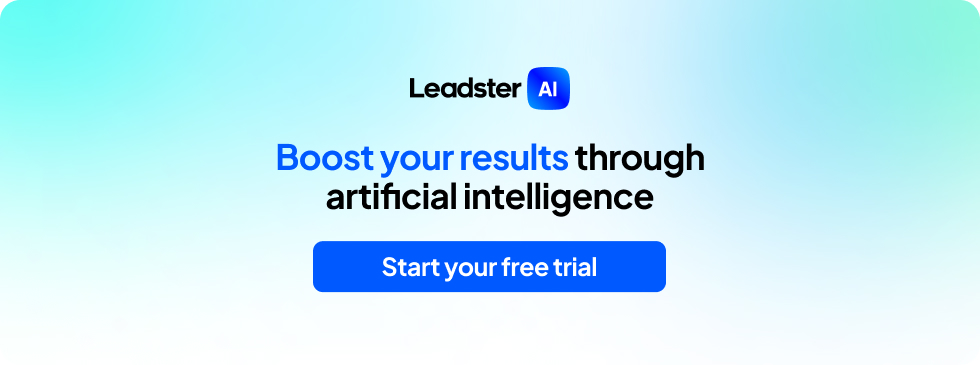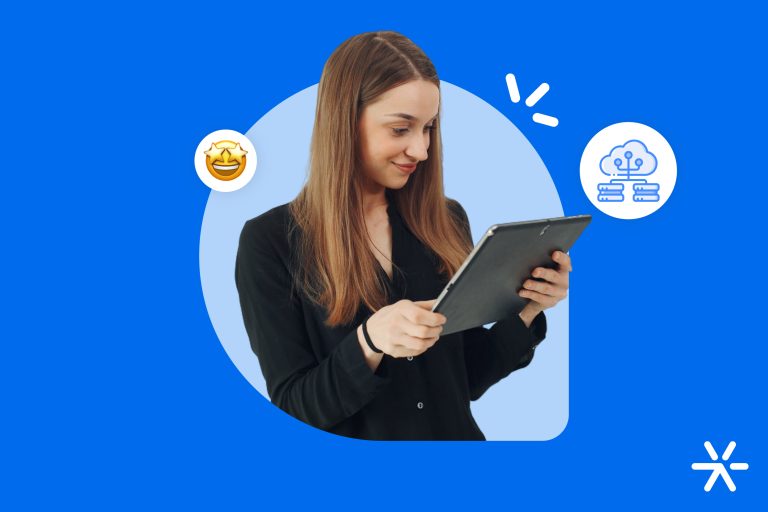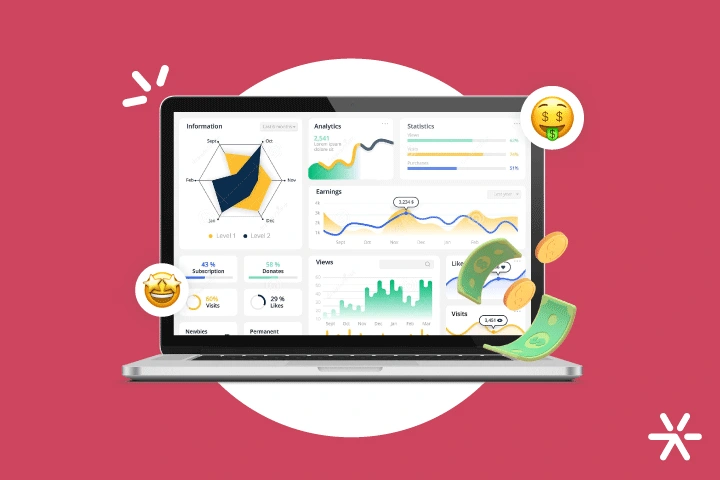Digital Marketing for Beginners: 15 Tips and 6 Tools
Writing about digital marketing for beginners is incredible.
I need to start this article like this because all of us, already veterans, have been where you are today – starting from scratch.
And we all have that beloved blog where we began to understand the first concepts, the fundamental ideas that guide digital marketing.
We hope that yours is Leadster’s 💙
This article comes with a good dose of positive energy: may you succeed in landing your job, your client, or transitioning your career without major difficulties.
It’s great to be part of your journey.
Here you will find the main terms of digital marketing for beginners, what you need to know to start your studies.
And from halfway onwards, some practical tips and 6 tools to help you in your daily routine.
Alright: emotional moment successfully completed. 😅
Can we begin?
Important Concepts of Digital Marketing for Beginners
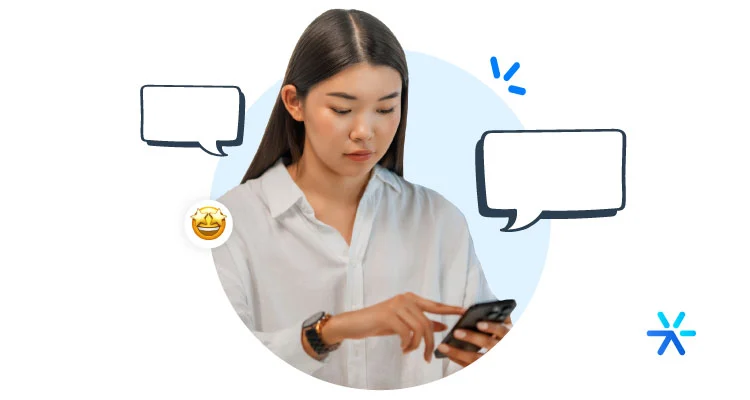
Well, the first step you need to take is to understand the key concepts of digital marketing – the real basics.
If you’re going to work in an agency, even in the interview, you’ll come across some of these terms.
And if you’re starting your studies now, to work in the field in the future, these terms are essential for you to take a single class or read more advanced texts.
So, pen and paper in hand – because taking notes helps you learn more – and let’s go to the most basic concepts of digital marketing for beginners:
What is B2B and B2C?
B2B and B2C are related to how a company operates, more specifically to whom it sells.
B2B means business to business, which means a business that sells to other businesses.
B2C means business to consumer – a company that sells directly to consumers.
You’ll encounter these two acronyms practically every day working with digital marketing or studying the subject.
It’s very important to know what they mean and have the difference at the tip of your tongue.
Your local bakery is a B2C company.
The online shoe store is also.
And even larger companies: Uber is B2C.
We at Leadster are B2B.
Advertising agencies are B2B.
Freelance marketers are too.
Some companies will be both: Localiza, a car rental company, deals directly with consumers at the counter and has agreements with companies, for example.
There’s another term: B2B2C.
Take Amazon as an example: when you buy there, often the product is supplied by another store, not Amazon itself.
In this case, a company provides its service to another company, which resells it to the end consumer.
What is the marketing mix?
Every worker has a toolbox.
The marketing mix is the toolbox of modern and contemporary marketing.
A carpenter opens his toolbox and takes out his hammer, nails, and screws to get to work.
Without these materials, he doesn’t get anywhere.
The marketing mix consists of the theoretical tools needed for a good marketing strategy.
It’s everything that ensures success in marketing.
These tools are the 4 Ps of marketing, digital or not:
- Price: your level of competitiveness in the market, compared to the competition;
- Product: the quality of what you offer, compared to market availability and consumer desire;
- Place: where you advertise and the people who are part of it;
- Promotion: promoting your product and its differentiators, your advertising and marketing.
These 4 Ps were originally published by Jerome McCarthy in his book “Basic Marketing: A Managerial View”.
Later, what McCarthy called “marketing compounds” was mentioned by Philip Kotler in his first book, “Marketing Management,” and became popular worldwide.
Today, we consider 4 more Ps of digital marketing, totaling 8 Ps:
- People: the greatest effort in marketing should be to know your target audience;
- Processes: the fast pace of the internet requires different processes and methodologies to sell more and more. Dive into our inbound marketing article!
- Positioning: with more media, there’s an effort to determine how the brand speaks and positions itself on each of them;
- Performance: with a large amount of data available to evaluate our work, it’s important to closely monitor them for quick adjustments.
What is a lead?
A lead is anyone who voluntarily leaves their contact information with you.
Through lead nurturing, you can gather more information about them, opening up more opportunities to offer your product at the right time.
This is one of the most important points on our list of digital marketing concepts for beginners.
Today, digital marketing is practically revolving around lead generation and their conversion into sales.
Typically, a lead leaves their contact to download some material, sign up for a newsletter, or receive valuable content options for their routines.
Leaving contact information with a company is a gesture of great trust, and you need to treat these leads with a lot of care and respect.
What is a marketing funnel?
Any discussion you have about digital marketing will, one way or another, involve the marketing funnel.
Basically, a marketing funnel determines the stages a customer goes through until making a purchase. It is divided into three levels:
- Top of the funnel: at this stage, companies that apply the marketing funnel need to generate visitors to their site and convert them into leads;
- Middle of the funnel: here, these leads need to be nurtured and qualified;
- Bottom of the funnel: now it’s time to turn this lead into someone closer to the sale, and then close it.
How to Determine a Target Audience?
“Public” is one of the Ps of digital marketing for beginners, remember?
Determining your target audience is one of the first steps in any marketing strategy today.
And your main concern, working in the field, should always be producing the right content for the right audience.
Determining a target audience involves several steps:
- Who the company wants to sell to;
- Who the product fits;
- Who will actually buy the product – family position (father, mother, grandparent, etc.) or in the company (CEO, CMO, analyst, and so on);
- Demographic characteristics – age, location, job, income, etc.;
- Business characteristics – what are their needs, fears, why they would buy your product, etc.
You need to have all this information to determine a good target audience.
Towards the end of the article, we’ll show you how some marketing tools work exclusively with this type of data to generate more visitors, leads, and customers.
How to Conduct Competitor Analysis?
Competitor analysis is not difficult to do and, unfortunately, there’s no magic formula.
But to master digital marketing for beginners, you need to at least know how to start.
It all depends on your segment.
If someone asks you this question, you start with this sentence first.
But the general and most basic steps of competitor analysis are these:
- Competitive benchmarking of your competitors’ websites – what’s missing? What do they do well? What not to do on ours?
- Listing the social media profiles of the main competitors – who are the best? How do they communicate?
- List of ads they run – Meta (formerly Facebook) allows anyone to see which ads other brands run. For Google Ads, another platform like SemRush is necessary.
In the digital realm, these initial actions will be enough for you to understand a little more about your market.
We have an article that will help you delve deeper into this: Target Audience: How to advertise to the right people.
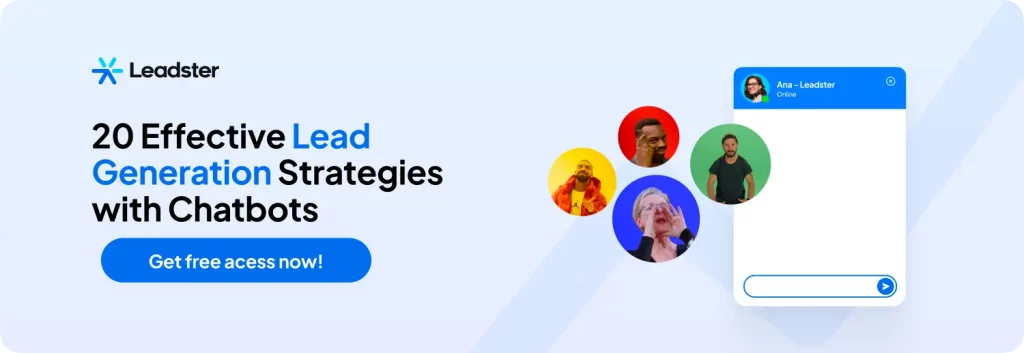
Advanced Concepts of Digital Marketing

Everything okay so far?
These are the most basic concepts of digital marketing for beginners, those that you simply need to know to take your next steps.
Now, let’s delve into some more advanced concepts that are key differentiators for securing better opportunities and new clients.
Starting with the main one:
What is inbound marketing?
Inbound marketing is a methodology created by Dharmesh Shah and Brian Halligan, the founders of HubSpot, in the book “Inbound Marketing”.
This work methodology determines that businesses should not waste customers’ time by sending spam emails or any type of unsolicited message.
This also includes very popular resources from traditional marketing, known as outbound: flyers, calls to people who have never interacted with the brand, billboards, and even TV ads.
But mind you: there’s nothing wrong with these methodologies.
Inbound marketing is just a response to increasingly demanding consumers who are tuned in to the internet.
In the inbound methodology, a brand needs to focus on content marketing to attract visitors to its website, and from there, apply the concepts and tools of the marketing funnel.
To start your studies in inbound marketing, I highly recommend the free course offered by HubSpot.
What is content marketing?
Content marketing is one of the most used resources at the top of the marketing funnel within the inbound methodology.
It determines that content production is the best way to attract more and more visitors to your website, and this content is also responsible for converting these visitors into leads and nurturing them until the sale occurs.
There’s no strict definition of what “content” means. Its characteristics vary according to your segment.
The platforms where you will publish are also quite diverse:
- Blogs;
- Social networks;
- WhatsApp;
- YouTube;
- Podcasts;
- E-books;
- Studies;
- Success stories.
What is SEO and organic traffic?
SEO stands for search engine optimization, and organic traffic refers to visitors who access your site “for free,” without any ads leading them there.
SEO is applied to pages of your site, especially in your blog articles.
It starts with keyword research, done in tools like Google Keyword Planner and SemRush.
With well-applied SEO for good keywords, you have a better chance of appearing in good positions on Google for them.
Think about you, who typed “digital marketing for beginners” on Google and found this article.
This was only possible because we here at Leadster did an SEO job.
And you arriving here spontaneously, without being impacted by ads, classifies your access as organic traffic.
What is paid media?
The opposite of organic traffic is paid traffic – those people who reach your site via ads on platforms like Meta (formerly Facebook) and Google Ads.
These platforms work through well-defined target audiences.
Basically, you select who you want to send the ads to, create your artwork, upload it, and set a budget to be spent.
This budget varies according to several factors.
You can track all of them in our dedicated article:
What is the customer journey?
The customer journey is an interpretation of the marketing funnel from the customer’s point of view.
In fact, in our article about the sales funnel, we made a small dramatization of Robert’s buying journey, a fictional character looking for sustainable clothing.
What the journey does is show the stages that lead a consumer to make a purchase.
They are as follows:
- Learning and discovery: the person is starting to understand some problem that they don’t yet know well, but that bothers them. In Robert’s case, he noticed looks when he was going to give a presentation at work;
- Recognition of the problem: this person understands what the source of their discomfort is. In Robert’s case, he realized that the looks were because his clothes were not suitable for his position;
- Consideration of the solution: now, the person is thinking directly about the product that will solve their problem. What are its characteristics? What is the price range? What are its functionalities?
- Purchase decision: once all of this is decided, the person decides to make the purchase from whoever best met their expectations.
How to Create a Digital Marketing Campaign?
These are the key concepts of digital marketing for beginners that you need to know before venturing into this career.
And it doesn’t matter what your area of expertise will be: self-employed, freelancer, in an agency, or in the marketing department of a company – these concepts are essential.
Another very important knowledge you need to have is how to create your first digital campaign.
Many companies even ask for mini marketing campaigns for the launch of a fictional product to test your knowledge.
Knowing is important.
Here’s a simple step-by-step guide to start your work:
1 – Competitive Analysis
It’s the first step you need to take to create your campaign, no matter what the purpose is – a simple campaign or an entire annual plan.
Competitive analysis is done by observing the indicators you have available about your own brand, what your long-term goals are, how these data relate to the goals, and what the market situation is today.
It’s also important here to conduct a competitive analysis to understand how other companies in your segment are working, to seek inspiration.
With all this resolved, you will have a good idea of where your brand fits in the market, and you will be able to guide your efforts with more certainty.
2 – Copywriting
What will your campaign contain?
After planning, you need to make the first drafts.
Depending on your area of expertise, you may not need to write anything.
Designers, for example, need to understand how to work well with copywriters.
Project managers and analysts will need to know what the writers’ needs are, what they need to write the best possible text – usually a good briefing.
If you’re doing an annual plan, the story is a little different.
You will need to produce the first pieces so that the management understands the point, and then approve what you planned.
3 – Creation
This is the stage of designers – they need to work together with copywriters and social media managers to create the pieces.
It’s important to understand this stage because it usually has the highest volume of work and revisions, and since we’re talking about digital marketing for beginners, you may not be prepared for this routine.
During creation, things tend to get more hectic in a marketing department or agency. It’s important to know how to deal with them to do the best possible work.
4 – Launch
The next stage of a marketing plan is the launch of what you planned.
This sounds easier than it really is, and you will need to know some fundamental platforms.
We’ll talk more about them right below.
Shall we continue?
6 Must-Know Digital Marketing Tools
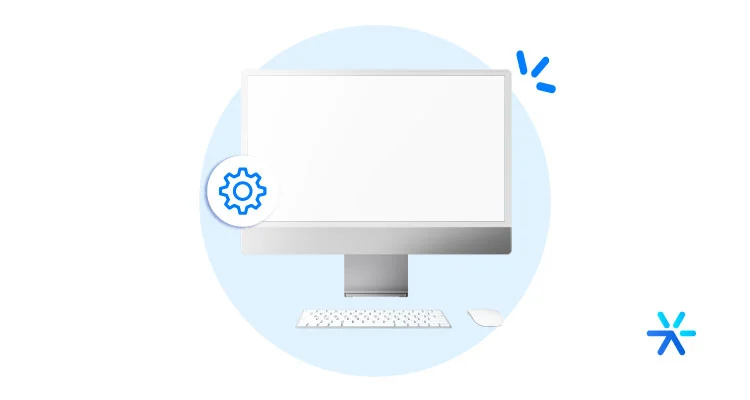
Well, continuing the conversation about launching, we’ve brought some basic publishing tools you need to know.
And some others related to your daily work.
Let’s start with the most fundamental ones: a CMS (WordPress), Google, and Meta:
WordPress – the CMS
CMS is a type of software capable of organizing all the content of a website.
To launch a blog, for example, you’ll need a configured CMS.
To add a new page to your site as well.
The most used CMS today is WordPress.
It’s free and open source, and offers a huge variety of plugins that are very easy to install.
Mastering WordPress completely is not necessary for those learning about digital marketing for beginners.
But you need to understand how to make simple posts on blogs right away.
Meta – the former Facebook
You’ll also need to start studying how sponsored posts work on Meta’s different platforms: Facebook, Instagram, Instagram stories, and Instagram Reels.
But don’t worry: this work is more specialized and doesn’t dive into digital marketing for beginners as much.
What you’ll need to know well are issues like the timing of posts, how to manage multiple saved profiles on the same phone, how two-factor authentication works, and simpler issues like that.
Google Tools
Google has a series of free marketing tools for those who use the platform to advertise and generate organic traffic on the site.
There are no requirements: everyone can use them.
Only Google Ads, the ad platform, charges for ads, but that’s more than expected.
But you also need to know and master the following tools:
- Google Analytics;
- Google Data Studio;
- Google Ads;
- Google Search Console.
The most important one for those researching digital marketing for beginners is by far Google Analytics.
Through Google Analytics, you can track the performance of your site’s traffic, both organic and paid.
With it, you have information like how many people accessed each page of your site in the period you want (including in real-time), how long they spent reading those pages, and if, after reading, they continued on the site.
Expanding on the Google Ads work, we have Google Search Console.
The tool is very robust and shows data that relate your pages to the position they reach on Google.
Email Dispatch Platforms
Email marketing is part of the inbound marketing strategy and consists of maintaining a relationship with your leads through email automations.
Building automations is also quite specialized work, and no one will expect you to master them in a junior position.
But at the same time, knowing the platforms and how they work is a great idea.
Inbound Marketing Platforms
The largest inbound marketing platform in the market is HubSpot.
Through it, you can create automations for all stages of the customer journey and marketing funnel.
Mastering RD Station is a long-term task, but it’s interesting to start taking your first steps now that you’re researching digital marketing for beginners.
What the platform does is simple but very necessary:
- Lead organization by qualification;
- Integrations with Meta for performance analysis and conversion indicators;
- Creation of nurturing flows;
- Creation and dispatch of emails;
- Creation of landing pages for lead generation;
- Integration with Google Analytics for traffic monitoring;
Among several other super interesting and necessary functionalities in the routine of those who work with marketing.
But as I said: you need to know the basics.
Know what the platform can offer.
You don’t need to be an expert immediately.
Chatbot Platforms
Conversational marketing is one of the biggest trends in digital marketing today.
Beginner or not, it’s very worthwhile to learn more about the methodology and the tools that enable it: especially chatbots.
A chatbot platform adds a small bubble to your site, where your visitors can interact to download materials or request immediate assistance.
The best thing about chatbots is that they work 24/7. There’s no weekend for a bot. 🤖
To understand more about the platforms and what they deliver, I recommend our more in-depth article on the subject.
Or go directly to our website and take a free test just to see how it works in practice!
